Physics AS
Introduction Physical Quantities & Base units Vectors & Scalars Kinematics Pressure & Density Dynamics Momentum Energy, power & efficiency Deformation of solids Waves Superposition Stationary waves Electric fields Electricity Circuits & Kirchoff's laws Radioactive Physics AS PracticalPaper 5More
Reference Pastpaper QuestionsWaves, Intensity & Doppler's Effect
You will need to know some basic terms which are related to this topic
Transverse waves
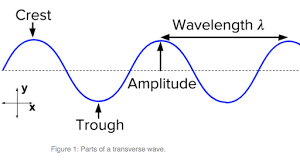
Waves which particles vibrate perpendicular to the direction of the wave energy
They contain points called crests and troughs
Crest and troughs are points in the transverse waves where particles have maximum displacement(amplitude).
Examples are electromagnetic waves and water waves
Longitudinal waves
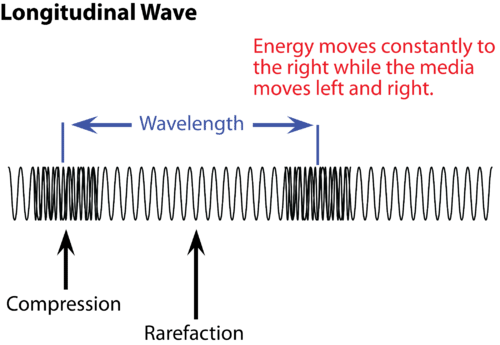
Waves which particles vibrate parallel to the direction of the wave energy
So this wave contains rarefractions and compressions
Rarefractions are regions of the longitudinal wave where particles are far apart / low pressure
Compressions are regions of the longitudinal wave where particles are squashed together
Wavefronts
It is an imaginary line which is drawn through the crest of the wave which is perpendicular to the direction of the wave
It is used to represent the crests of the wave. And also the the distance between two wavefronts is the wavelength
Displacement of a wave
The distance of a particle in a wave from its equilibrium state in a specified direction
So Particles , depending on the type of wave can only move perpendicular or parallel, so its displacement of each particle is shown by an oscilliscope device
Amplitude
The maximum displacement of a particle from its equilibrium state
Rememebr amplitude has no direction and so amplitude is always positive
Speed of a wave
Is the distance travelled by the energy of the wave per unit time
Velocity = Frequency * Wavelength
Is the distance travelled by the energy of the wave per unit time
Velocity = Frequency * Wavelength
We will come to this later
Frequency
The number of waves generated by the source per unit time
Remember that frequency of a wave depends on the source always and not the medium. In fact, frequency of wave remains constant in any medium unless the source is changed.
1 Hertz
When one wave is generated by the source per second
Period
The time taken for one wave to be produce by the source
It is in terms of seconds
Wavelength
It is the length between two similar points of two consecutive waves
Remember that this for the same wave or source
A wave is usually considered as one cycle only
Now let us derive some equations
Link between Frequency and period
So frequency is the number of waves per second where as period is the time taken for one wave
If we have a wave of frequency 25Hz, it means 25 waves are produced per second and so each wave takes 1/25 seconds. This gives us a new formula
Frequency = 1/Period
In fact, period is in seconds and so the base units of frequency is s-1
Finding the velocity of a wave
To find the velocity of the wave we need to apple the same equation of velocity
v = d/t
The wavelength is the distance moved by one wave and the period is the time taken for this wave to be moved
The division of this gives us the speed
Velocity = Wavelength/Period
We know that Frequency = 1/Period. So instead of dividing the wavelength with period we can multiply it by just frequency
Velocity = Frequency * Wavelength
The above proof must be memorised and explained as above
Graphs of Waves
This shows the graph of a displacement time graph
There are few things you have to remember
- Amplitude
- Period
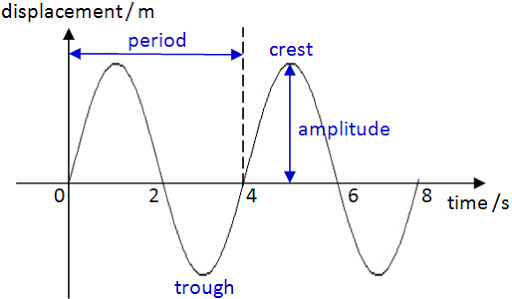

The graph below shows a displacement-distance graph ( how the displacement of particles changes with the distance moved by the wave ). It's the same as the above graph. However, remember this:
- Wavelength
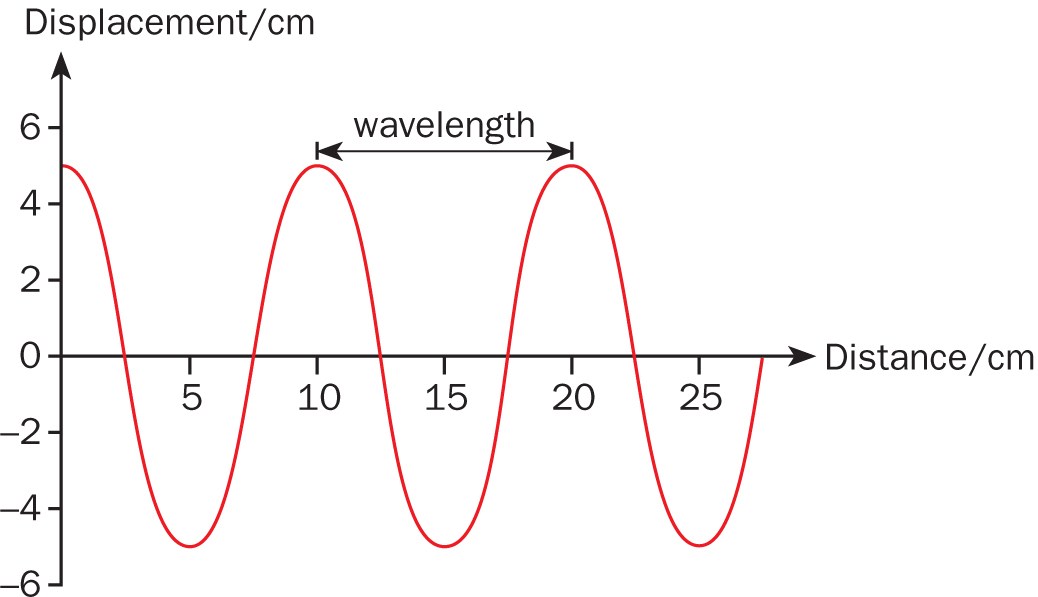
Instead of period, the distance between two similar points of two consecutive waves is the wavelength. This because, the x-axis measure distance and not time. So always remember to check what quantity does the x-axis measure
Phase

The angle subtended at the center of the circle where the path of the oscillating particle is represented by the circumference of the circle
If you look at the graphs of waves we will see the path of the particle is stretched across time and this actually represents the circumference
So let us see what is phase of a wave
Let's take an transverse as an example. We know as time goes on, the particle vibrates up down down and up again in a cycle. If we stretch this across time we get the displacement-time graph of a wave. And it looks like a sine graph
When a particle is at a particular position at a specific time, we state the position in terms of radians or degrees, this is called phase.
So usually when we define a base point as 0° or 0rad then after one quater of the wave period has been passed, the position is at the peak and is now 90° and when half is complete it is 180°. Think of a sin graph where we plot the sine value against the angle, it loops every 360°. That sine curve is actually how the particle vibrates but, only perpendicular.
So if we have a circle, how do we calculate the angle of a specified arc length
If the arc length of the circle is 2m and the total circumference of the circle is 8m, what is the angle of the sector?
(2m/8m)*
2 π
= π/2 or 90°
Likewise, we apply it for waves
We can see that we get a ratio between the arc length and circumference likewise, if we need to find thephase difference, we find the difference between two point of the same wave or between two similar points of two different waves
Phase difference
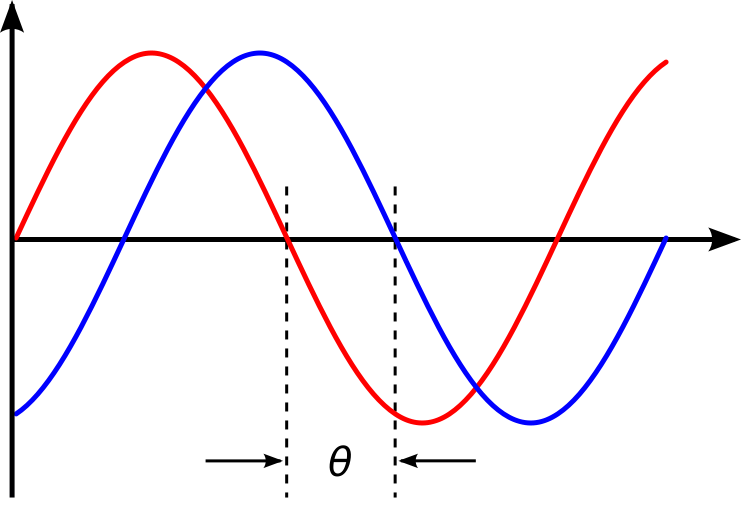
When two points of the same wave or two similar points of two different waves a compared the difference in the angles subtended at the centers of the circle is called the phase difference
There are two ways we can calculate phase difference
If we get a graph of Displacement-time graph
Phase difference = (Difference in time/Period) *
2 π
If we get a graph of Displacement-distance graph
Phase difference = (Difference in length/wavelength) *
2 π
This can also be multiplied by 360° to get degrees. However, questions usually ask in radians
You need to remember an important point! The definition of phase difference states that it is used to compare two similar points of two waves. So say one crest of a wave could be measured
with a crest far away, this can have a phase difference of more than 360° or
Confusing? Let's see the below example
We know , When we measure the difference of similar points between two CONSECUTIVE waves. Which for example is 2m, we can calculate the phase difference as 90°, if the wavelength is equal to 8m. This is because, the difference would be 1/4 of the wave. But you actually can compare not just consecutive points but, any SIMILAR points, so actually if we go to the next similar point it will be 360° away. So 90+360 is 450° and it could be another 360° away and so on
Phase difference = 90° or 450° or 810°..
Phase difference = Smallest phase difference + n360°
where n is a positive integer
This is actually an understanding - you have to know a phase difference of 30° is same as 390° and 750° and so on. It increases by 360°. Think of a sin graph, the sin graph has infinite solutions and each solution repeats every 360°
Coherent waves
For the above example, the waves must be coherent, which means that they have a constant phase difference at any given time
So if you compare two similar points and another two similar points you must have the same phase difference. This is not always the case and more will be talked about this in the superposition chapter
Intensity
The power delivered by the wave to per unit area
Intensity = Power / Area
we can write it in terms of base units: kgs-3
SI units: Wm-2
Think of a laser being focused on to your eyes. It's very small but, has a very high intensity!
So the power is actually the work done by the particles as they oscilate per unit time
Link between intensity and amplitude
We know amplitude is the maximum displacement of the wave. When the displacement increases more work is done per unit time, but when amplitude doubles, the intensity increase by 4. Why?
The intensity is directly proportional to the amplitude Squared
Intensity ∝ Amplitude2
Intensity/Amplitude2 = Constant
The constant arises from direct proportionality
So why? A way I could explain is that when the amplitude increases, the one half of the wave vibrates up more(doubles) and the other half vibrate down more(doubles). So when you increase the amplitude, not only the top peak increases but, also the bottom peak increases doing squared the work per unit time
Fast Method of solving Intensity questions
Usually MCQs and questions will ask what the amplitude is when the intensity doubles or what is the new intensity when the amplitude halves. We will see that down.
Let's see an example:
The intensity of a wave is 10Wm-2. The amplitude is 5m
What is the intensity, when the amplitude is 10m?
Now there are two ways of doing this. You can either find the constant by using the principle of proportionality.
Using the constant:
Intensity = K * Amplitude2
Intensity/amplitude2 = Constant
10/25 = 0.4
So we can use the same constant for the next set of data
Intensity = 0.4*100
Intensity = 40Wm-2
There is another and simple way of doing this and this requires a bit of logic
We know the amplitude has doubled and we know:
Intensity ∝ amplitude2
So when amplitude has doubled, the intensity would be the square of the double which is 4 times greater
(2 * amplitude )2 ∝ Intensity * 4
So intensity is 4 times greater
Intensity = 4 * 10
Intensity = 40Wm-2
Now say if the intensity was doubled, by how much will the amplitude increase
Intensity ∝ Amplitude2
√Intensity ∝ Amplitude
So when the intensity doubles, the amplitude only increases by √2
Intensity-Time/Distance graphs
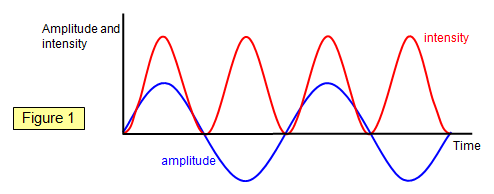
The intensity-time or intensity-distance graph is different from a normal wave graph.
Intensity is always positive, in order words the negative part of the wave is upwards/reflected
And so it looks like this
Remember this as they might ask you to calculate the period/Frequency of the wave using this information only
Doppler's effect
When objects which generates a frequency moves, the observed frequency is different from the frequency of the source
So we can find the frequency observed using this formula
Frequency observed = Frequency(source)*Wave velocity / (Wave velocity + Velocity(source))
At different situations we get - minus
Frequency observed = Frequency(source)*Wave velocity / (Wave velocity - Velocity(source))
I know this equations looks hard but, here's an easier form
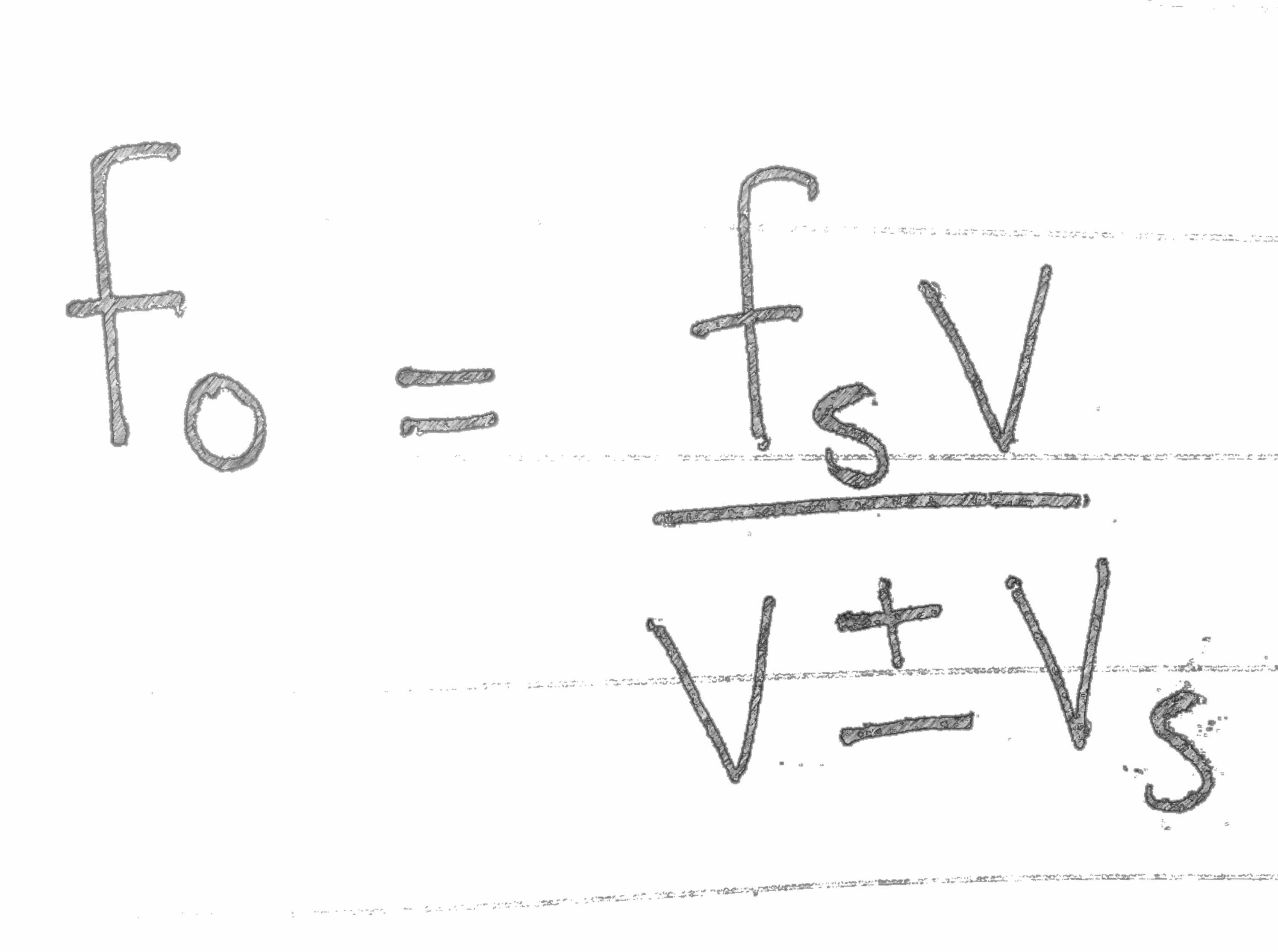
So remember this point, when an object is moving towards us, we use minus
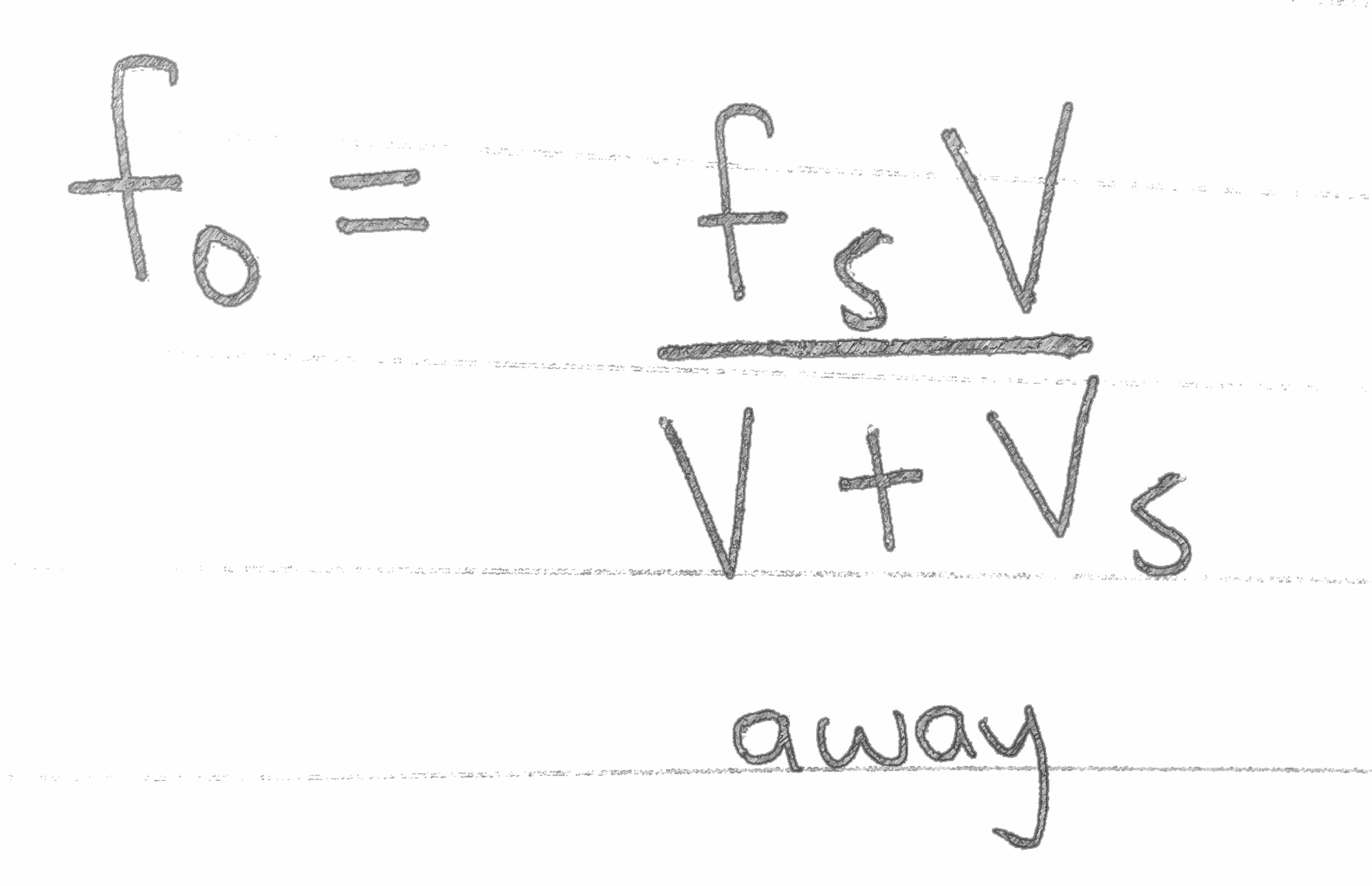
If it is moving away, we use plus
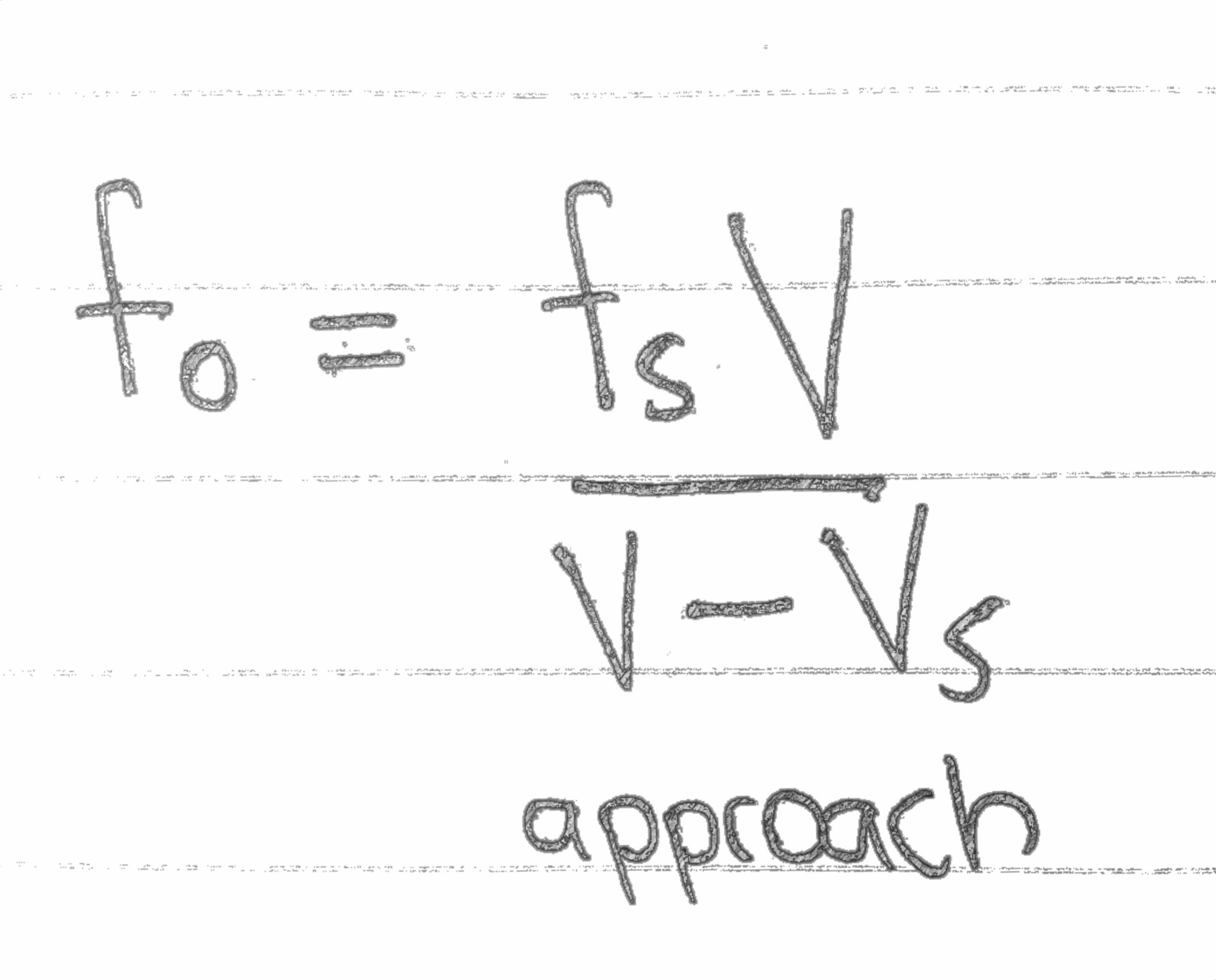
Think of it as relative speeds
So this helps us to predict the frequency heard, when an source is moving relative to us
The questions will sometimes ask us to calculate the frequency of the source, when the observed frequency is known. So which equation should you use?
They will mention if this is the maximum frequency or the lowest frequency heard. If the highest frequency is heard, this means it's moving towards us so we use minus
If it's the lowest, it means it's moving away from us so we use plus!
Why? Think of it like this! When an object is moving towards us, the waves will be more squashed like below, so the wavelength is shorter and so frequency increases
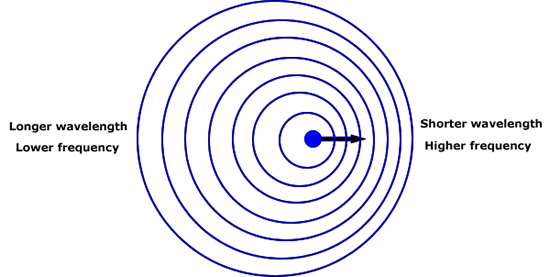
Whereas, if it moves away, the waves are spread out when they reach us, so lower frequency
Remember that one side is always squashed and the other side is stretched
Doppler's effect practical uses:
We usually think of sound waves in Doppler's effect. However, Doppler's effect works in all types of waves, even light!
So it is used to find:
- Blue shift and red shift in stars
So it can predict the movement of stars
One of my friends once said:
What's the point knowing an asteroid is coming towards earth by using Doppler's effect?
He has a point, we will be dead anyways!
Electromagnetic waves
You need to know the characteristics and uses of the electromagnetic waves
They have these properties:
1. Travels at 3 * 10ms-1
2. Doesn't require a medium to travel so these are called electromagnetic waves. Waves which require a medium to travel are called mechanical waves
3. These are transverse waves
You need to know all types and their wavelengths by heart
| Type | Wavelength in vacuum | Uses |
|---|---|---|
| Radio waves | 106m to 10-1m | Radio signals & FM |
| Microwaves | 10-1m to 10-3m | Satelites/space or phone waves or Radar |
| Infrared | 10-4m to 10-7m | Grills & remote signals |
| Light | 7 * 10-7m to 4 * 10-7m | Vision |
| Ultraviolet | 3 * 10-7m to 10-8m | Sterilisation & tanning |
| X-ray | 10-8m to 10-13m | Bone image & treating cancer(can cause also if too much exposure) & Also for Secuirity checks |
| Gamma Rays | 10-10m to 10-16m | Sterilisation & killing bacteria & treating cancer |
There are some points you need to remember:
1. If we need to calculate the frequency just divide speed of light by the wavelength
There is a reason why this is the wavelength in vacuum as the frequency remains the constant but, the wavelength and the speed changes from different mediums
2. The main difference between x -rays and gamma rays are the sources
X - rays are formed by slowing down fast moving electrons whereas, gamma rays are from radioactive sources
Recommended
These are things you might like. Clicking these ads can help us improve our free services in the future...
End of Chapter Videos
Collection of Videos to Support Your Understanding.
Remember these videos are handpicked by me and I feel these are the best ones out there. But I constantly update this list for each chapter. The Youtubers are more than welcome to contact me.
Also, don't forget to Subscribe to our Youtube channel - MrWik
Watch
